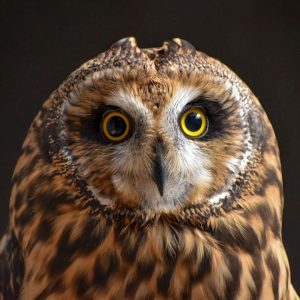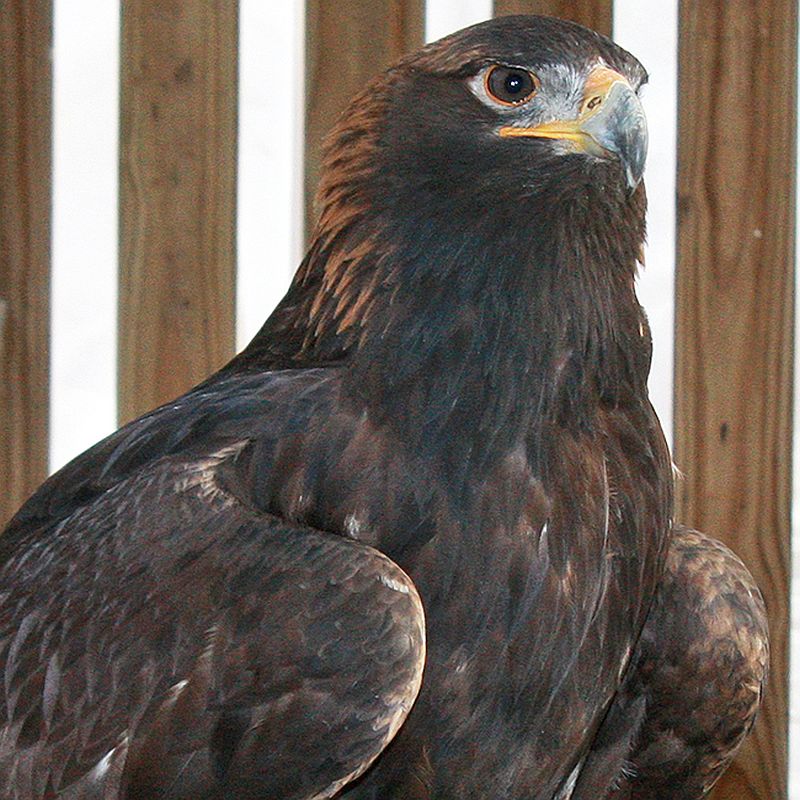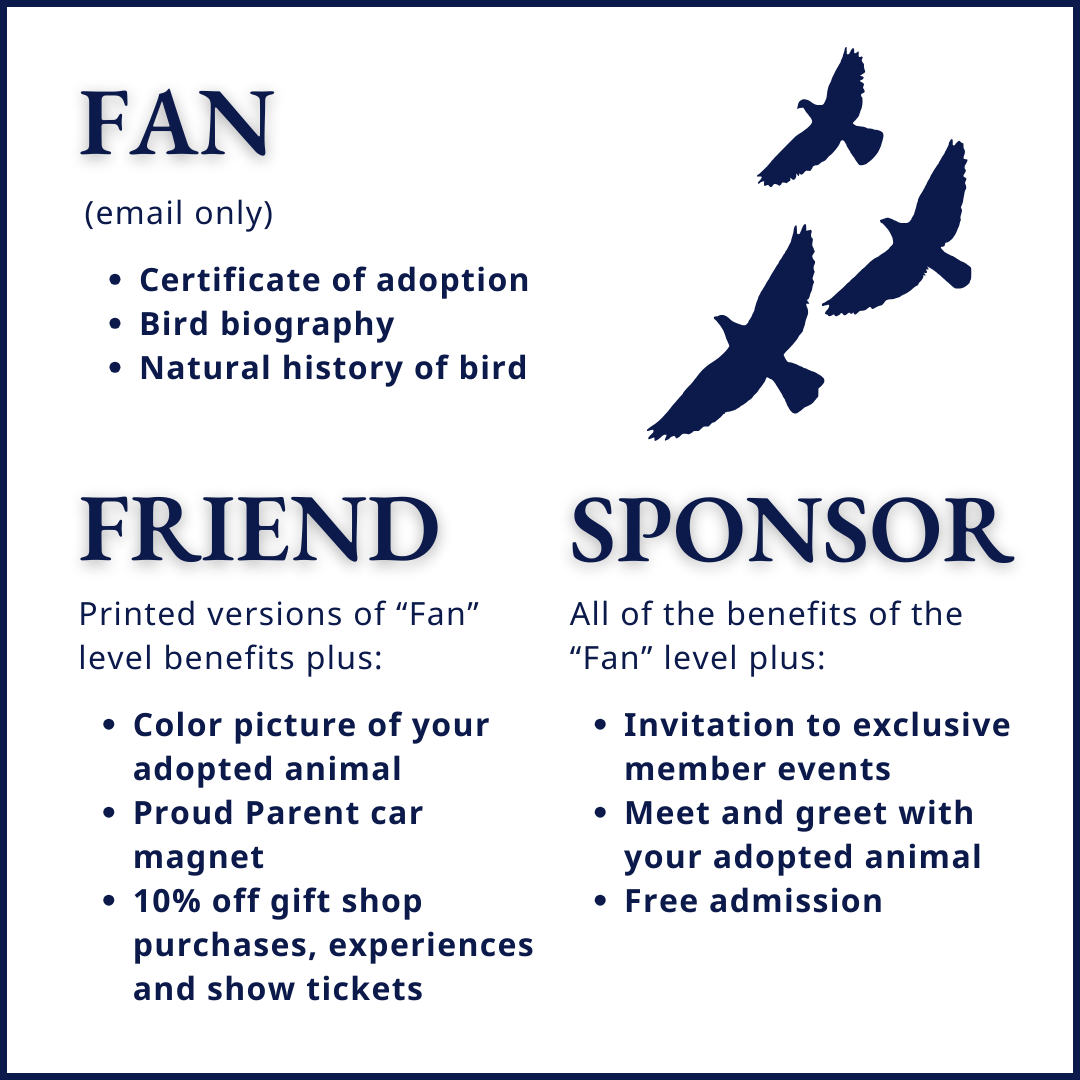Golden Eagle – Zeus
Zeus came from a falconer who held both parent birds on a depredation permit (eagles who prey on livestock). Both birds were housed together and eventually mated. The result was Zeus. This falconer, however, did not have a breeding license. The U.S. Fish & Wildlife Service has very strict rules when it comes to the permits issued to possess Eagles. Because the falconer did not have a breeder’s permit he was required to give up any chicks that might result from these two birds while they were in his possession.
World Bird Sanctuary was contacted and asked if we could take the chick. We agreed to do so, but not until the chick was of fledging age and raised by the parents.
$29.00 – $129.00
Description
HATCH YEAR: 2012
FUN FACTS ABOUT ZEUS
- Zeus is a girl! Birds of prey can only be distinguished between male and female based on their size, or doing a DNA test with blood or a feather. Since Zeus came to us at a young age, we made our best guess based on size, since DNA tests are expensive.
- She is used in our out of state Zoo Show programming during the summer as one of their flyers. When not wowing crowds at Zoo Shows, she lives off exhibit at our Education Training Center.
SPECIES FACTS
Scientific Name:
- Aquila chrysaetos. Latin and Greek origin meaning “dark in color goldeagle.”
Distribution:
- Mid-Canada south into Mexico; west from Colorado to the Pacific Ocean; also found in extreme Northeast – New Brunswick, Nova Scotia; winter range may extend as far south as Tennessee and east to the Atlantic; also found on many other continents.
Habitat:
- Mountainous regions, open lands, hardwood forests, and deserts.
Diet:
- Will hunt mostly rabbits, groundhogs, prairie dogs, turkey, grouse, waterfowl, and smaller raptors. They will also follow crows around to find carrion and can take down large domestic livestock.
Behavior:
- Even with their large size, they possess astonishing speed and maneuverability. Golden Eagles have been clocked diving down from great heights at speeds over 200 mph!
- Mated pairs may successfully breed together for as long as 20 years.
- Clutch size is normally 2 eggs laid between March and May. The same nest may be used from last year; with minor repairs and additions like fresh grass, sticks, and evergreen branches.
- Eaglets fledge 9-11 weeks later, but do not reach adulthood for about 5 years.
Identification:
- Dark brown feathers covering the body in both adults and juveniles; adults have copper-gold feathers on the back of the neck; immature birds have white patches under the wings and a white band on the tail, which gradually disappears as the birds mature.
- Legs are feathered all the way to their talons.
Additional information
| Adoption Level | Fan, Friend, Sponsor |
|---|
Related products
-

Short-Eared Owl – Rose
$29.00 – $129.00 Select options This product has multiple variants. The options may be chosen on the product page -

American White Pelican – Scoop
$29.00 – $129.00 Select options This product has multiple variants. The options may be chosen on the product page




